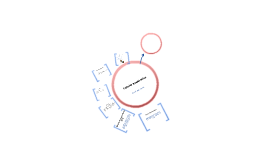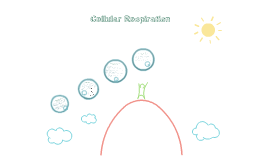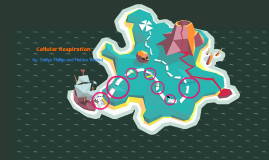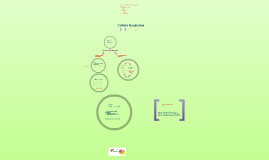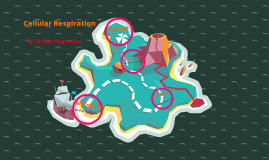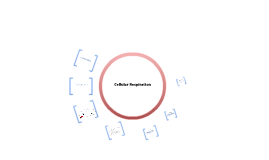Cellular Respiration
Transcript: 7.3 Aerobic Cellular Respiration The enzyme phosphoglucoisomerase converts glucose 6-phosphate into isomer fructose 6-phosphate. 7.4 Anaerobic Cellular Respiration There are two types of Cellular Respiration.. A major variable that can influence and limit the available chemical pathways is the presence and absence of Oxygen. Aerobic cellular respiration occurs in the presence of oxygen and involves the complete oxidation of glucose. Takes place in the absence of oxygen. Stage 1: glycolysis Stage 2: fermentaion Without O2, ETC cannot function, so anaerobic organisms have found many different ways to recycle NAD+ and allow the process of glycolysis to continue. Fermentation- recycles some of the products from glycolysis into two different pathways where either co2 and ethanal (alcohol fermentation) or lactic acid (lactic acid fermentation) are the final waste products. Glucose is a high energy molecule that cannot be used directly by a cell, it is a 6-carbon sugar. During glycolysis, glucose is converted to 2 - three carbon sugars called pyruvate. Glycolysis is an anaerobic process (does not require oxygen), it takes place in the cytoplasm. The 10 Steps of Glycolysis The Krebs cycle is a series of reactions which occurs in the mitochondria and results in the formation of ATP and other molecules which undergo further reactions to form more ATP. C6H12O6 + 6 O2 + 36 ADP + 36 Pi -> 6 CO2 + 6 H2O + 36 ATP The enzyme triose phosphate dehydrogenase serves two functions in this step. First the enzyme transfers a hydrogen (H-) from glyceraldehyde phosphate to the oxidizing agent NAD+ to form NADH. Next triose phosphate dehydrogenase adds a phosphate (P) from the cytosol to the oxidized glyceraldehyde phosphate to form 1, 3-bisphosphoglycerate. This occurs for both molecules of glyceraldehyde phosphate produced in step 5. Glucose + 2ADP + 2 Pi -> Lactic acid + 2ATP C6H1206 + 2 ADP + 2 Pi -> 2 C3H6O3 + 2 ADP The enzyme aldolase splits fructose 1, 6-bisphosphate into two sugars that are isomers of each other. These two sugars are dihydroxyacetone phosphate and glyceraldehyde phosphate. Demand of energy for most cellular processes are supplied by the energy stored in ATP. ATP is continuously broken down to ADP and Pi as they release energy to do work, then are changed so they can be used again. C6H12O6 + 2ADP + 2 Pi -> 2 C3H6O3 + 2ATP Cellular Respiration At some steps in the electron transport chain, the jumps from one energy level to the next are significantly larger than in others. The energy that is released in these steps is enough to power a process which drives ADP and phosphate molecules together to produce ATP. This process, called chemiosmosis, is discussed in the next section. glucose + ADP + inorganic phosphate -> lactic acid + ATP Cells have a limited amount of NAD+ and without a mechanism, glycolysis will not function and the cell will die. Stage 1: Releasing Energy Anaerobic Cellular Respiration Aerobic respiration produces many more ATP molecules than either of the anaerobic respiration processes Glycolysis allows organisms to get energy from nutrients without oxygen. During this process NAD+ is converted to NADH. This reaction is needed for Glycolysis. The enzyme pyruvate kinase transfers a P from PEP to ADP to form pyruvic acid and ATP. This happens for each molecule of PEP. This reaction yields 2 molecules of pyruvic acid and 2 ATP molecules. Plants make starch or storage over a long period, while animals and fungal cells link together glucose molecules to create "glycogen." When cells need energy for a particular process, that is supplied from ATP. The cells of both plants and animals release the energy that is stored in the bonds of glucose molecules. This is called Cellular Respiration. Stage 2: Stage 2: Fermentation The enzyme hexokinase phosphorylates glucose in the cell's cytoplasm. A phosphate group from ATP is transferred during process to glucose producing 6-phosphate. Stage 8: Glycolysis Stage 5: Electron Transport Fermentation occurs in the cytoplasm of the cells. glucose + ADP + inorganic phosphate -> lactic acid + ATP Glycolysis yields only two ATP molecules from each glucose molecules processed. This is not enough to satisfy the energy needs of organisms. Lactic Acid Fermentation Glucose is broken down during cellular respiration, done inside the mitochondria. Both types of respirations start with glycolysis. A short summary of the Krebs Cycle: The electron transport chain is the final stage of aerobic respiration. It makes use of the molecules of NADH and FADH2 formed during glycolysis and the Krebs cycle to produce great amounts of ATP. As the electrons are passed from high to low energy levels, energy is released. After many steps, the electrons are finally accepted by oxygen at the lowest energy level, producing water. Animals such as humans obtain energy from glucose by aerobic respiration. Though, during strenuous exercise, our muscle cells demand more ATP energy than can be supplied






